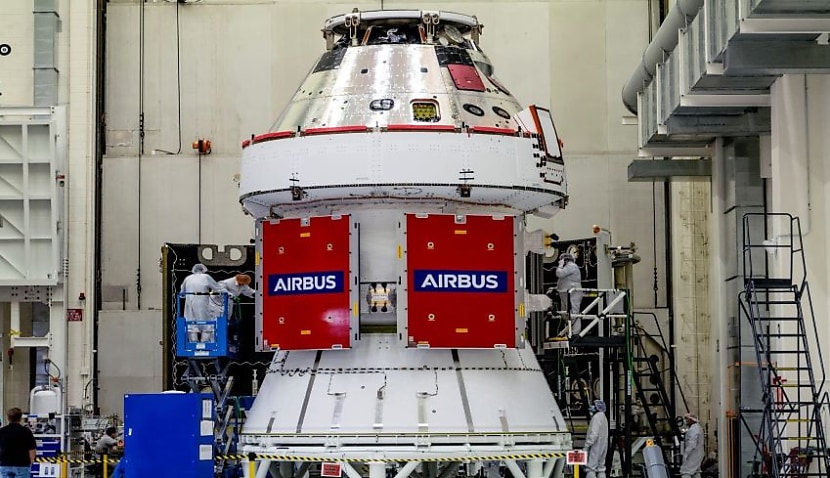
The Artemis missions will involve some of the most groundbreaking space technology known to man, from the Orion spacecraft to the new Space Launch System and the future plans for a lunar gateway station and base camp.
We explore one of the critical technologies powering the Orion spacecraft, the European Service Module.
The European Service Module
The European Service Module (ESM) is the power module that will provide thrust to the Orion during its flight as well as the critical life support system needed to keep astronauts alive aboard the spacecraft.
The ESM, designed and funded by the European Space Agency and constructed by Airbus, is a critical foundation of the Orion spacecraft.
This will provide propulsion and power to the spacecraft, ensure thermal regulation, and provide water and oxygen to astronauts on the eventual crewed missions.
The ESM is derived from the Automated Transfer Vehicle (ATV) which was used to resupply the International Space Station from 2008 until 2015. The ATV was also built by Airbus, with the experience gained there used in forming the development of the ESM.
Aside from its functions of keeping any astronaut aboard alive, the ESM also enables delicate orbital manoeuvring and altitude control, a particularly important feature for future missions that are planned to perform lunar landings.
Weighing just over 13 tonnes and consisting of more than 20,000 parts and components, the construction of the ESM was no small feat. The module has been in development at Airbus since late 2014, with the first unit being fully assembled in 2018.
The cylindrical module of the ESM is around 4 metres long with the main body measuring 2 metres high. The ESM is connected to Orion via the crew module adaptor, linking to the main capsule where the astronauts are located in the spacecraft.
The ESM also contains three separate types of engines to provide propulsion to the Orion. Large tanks of gas and propellant are stored within the module to provide the fuel for these engines.
The engines can be fired in all directions to provide total control of the spacecraft, which will be important during future missions which will require delicate manoeuvres.
Solar panels power the entire module, with the solar array measuring a span of 19 metres once unfolded in orbit. The panels provide enough electricity to power two large households on Earth.
Over 11 kilometres of cables are used within the ESM, from directing the power provided by the solar panels to sending and receiving information from the myriad of sensors aboard the Orion.
Artemis I – the first test flight
Artemis I will be the first true test of the ESM which will deliver the Orion to and from its lunar orbit during the mission. Although for this mission, the oxygen and water supplying functions of the ESM will not be utilised.
The launch of Artemis I will send the Orion Spacecraft on a 42-day, two-million-kilometre journey far beyond the moon in the first phase of NASA’s mission to send humans back to the moon.
The Artemis mission represents a huge development for the entire international space community. The construction of the lunar gateway, the human landing system and the Artemis base camp will invariably involve industry-wide efforts.
Jean-Marc Nasr, head of Space Systems at Airbus, spoke about the Artemis mission and its significance to the industry, as well as emphasising the important role the ESM would play.
“The launch of NASA's Orion spacecraft with the European Service Module has historic significance 50 years after the last astronaut lunar mission and is another major step toward returning astronauts to the moon.”
The much-awaited return of humans to the moon will occur on the Artemis III mission, with NASA recently revealing the shortlist of landing regions.

Liam McAneny
Liam McAneny is a journalist who has written and edited for his University International Relations journal. He graduated with a Bachelor of Arts (International Relations) and Bachelor of Laws from the University of Wollongong in 2021. He joined Momentum Media in 2022 and currently writes for SpaceConnect and Australian Aviation. Liam has a keen interest in geopolitics and international relations as well as astronomy.
Send Liam an email at: [email protected]
Receive the latest developments and updates on Australia’s space industry direct to your inbox. Subscribe today to Space Connect here.









